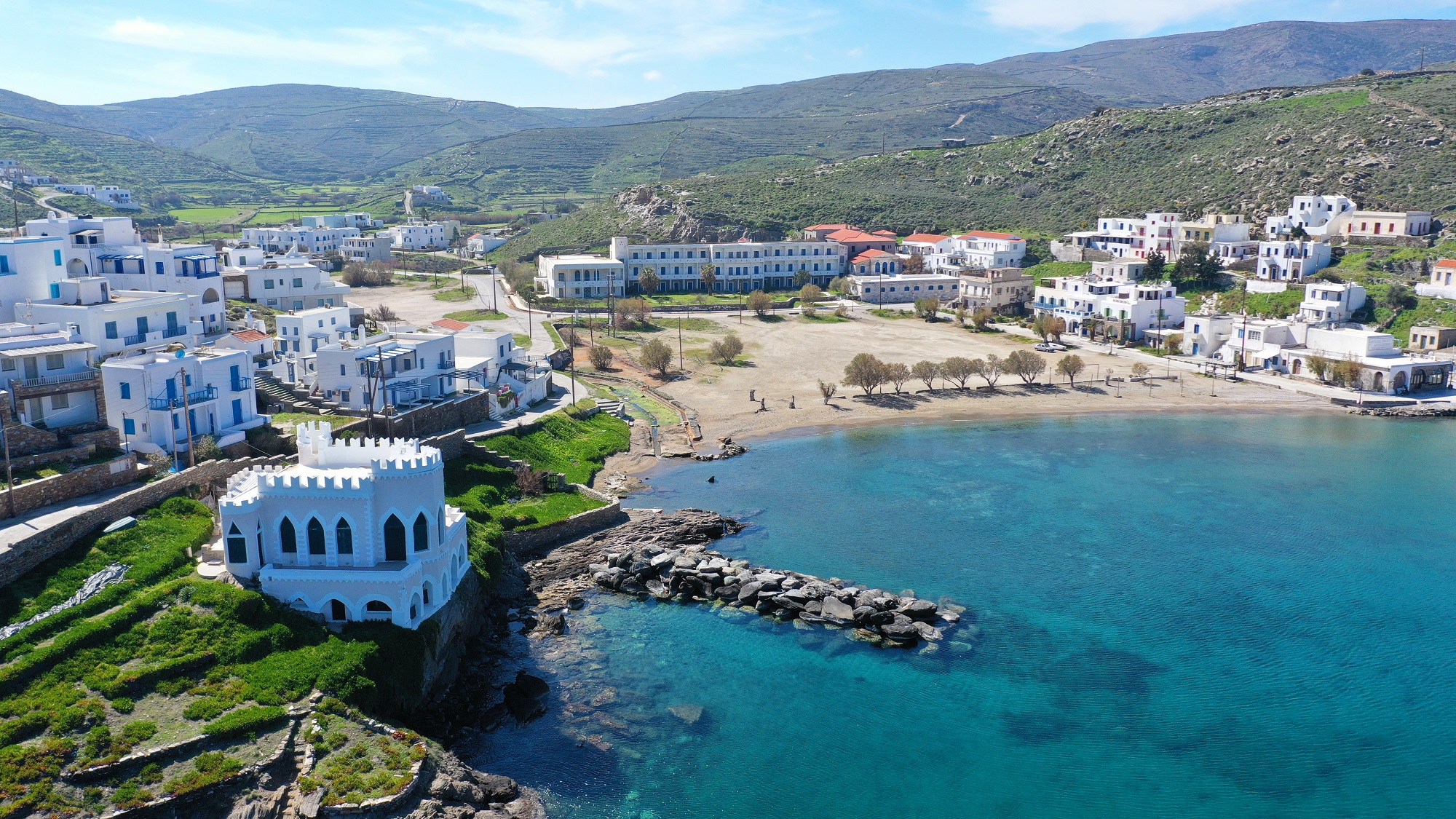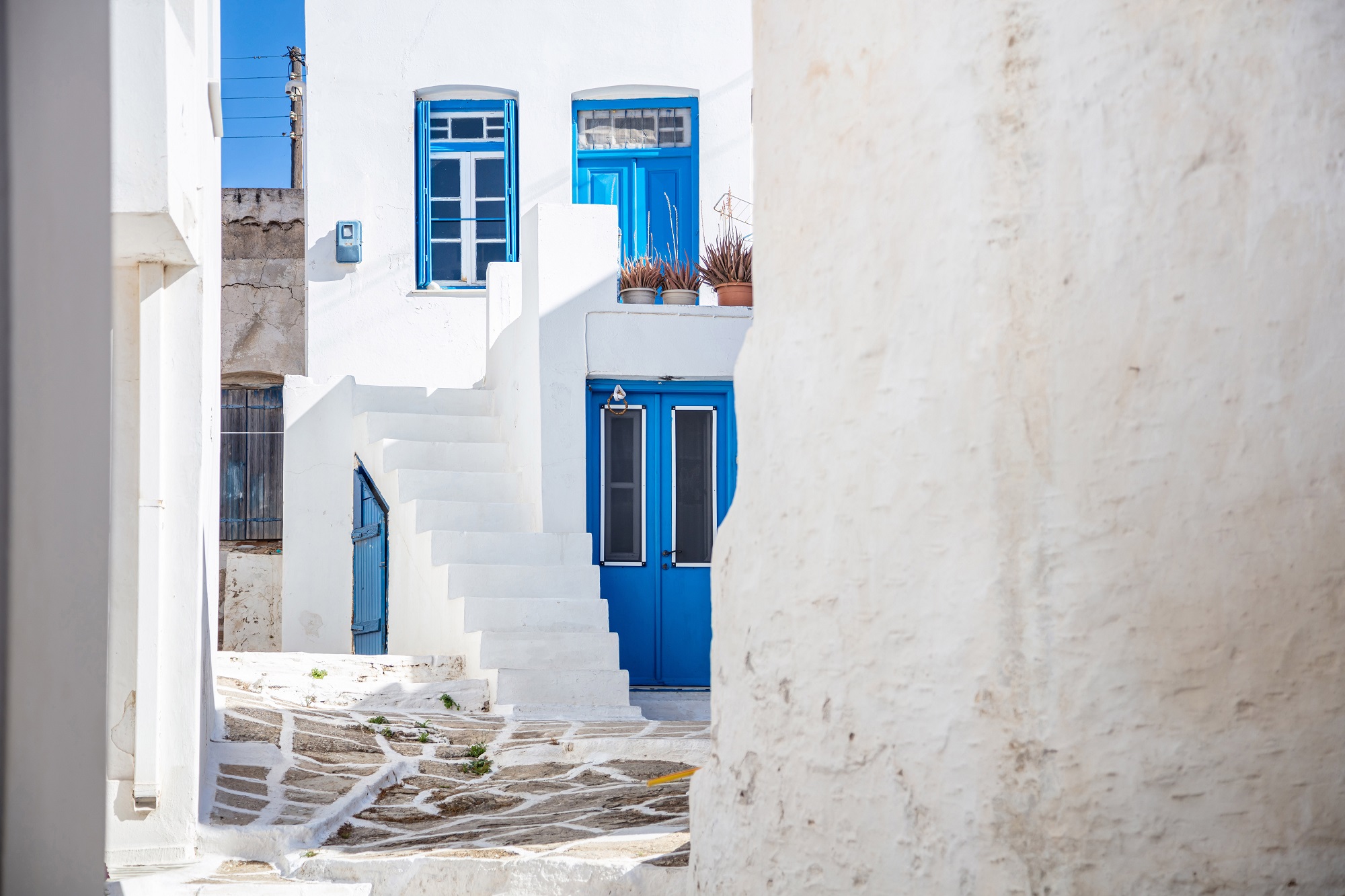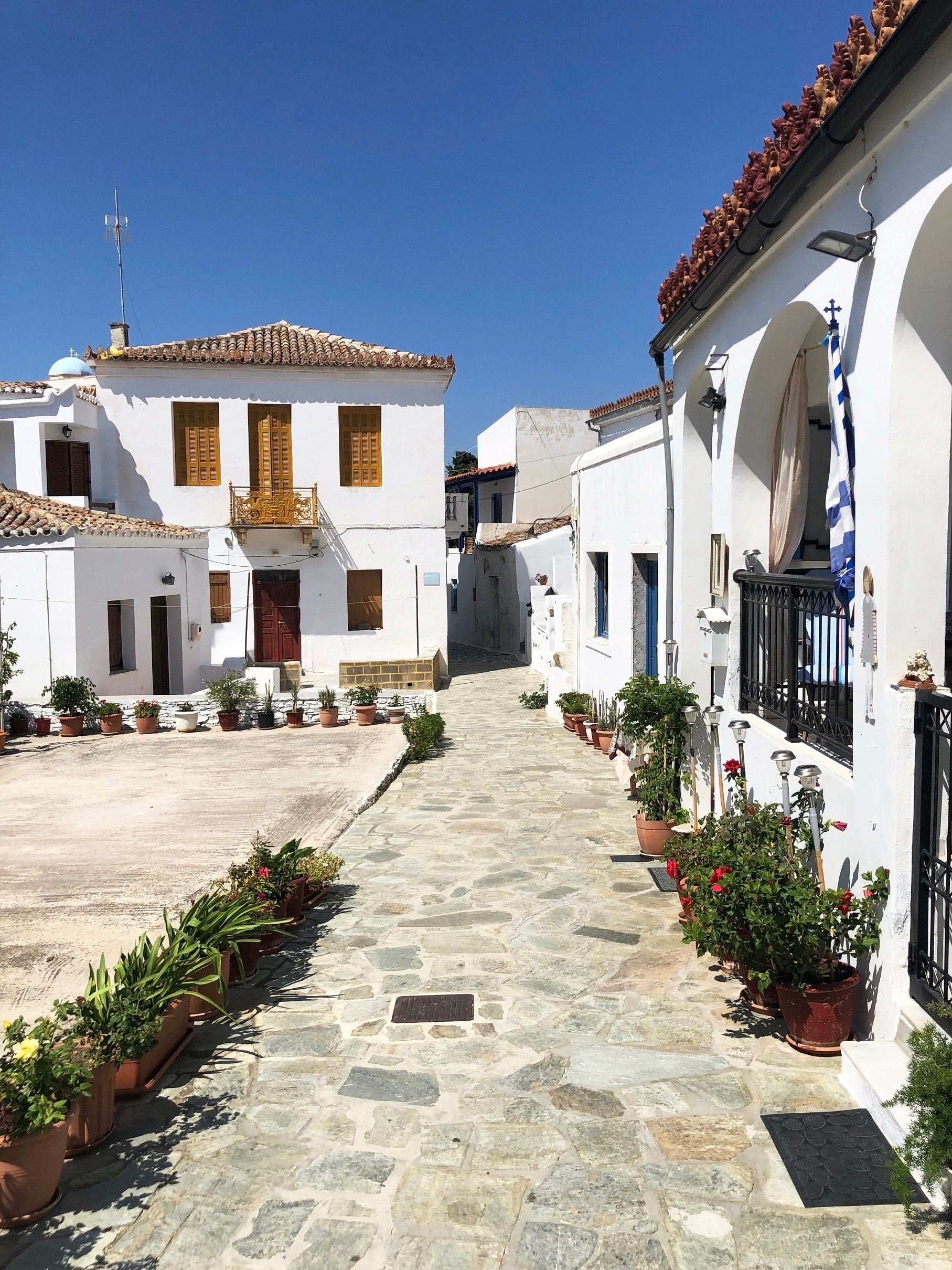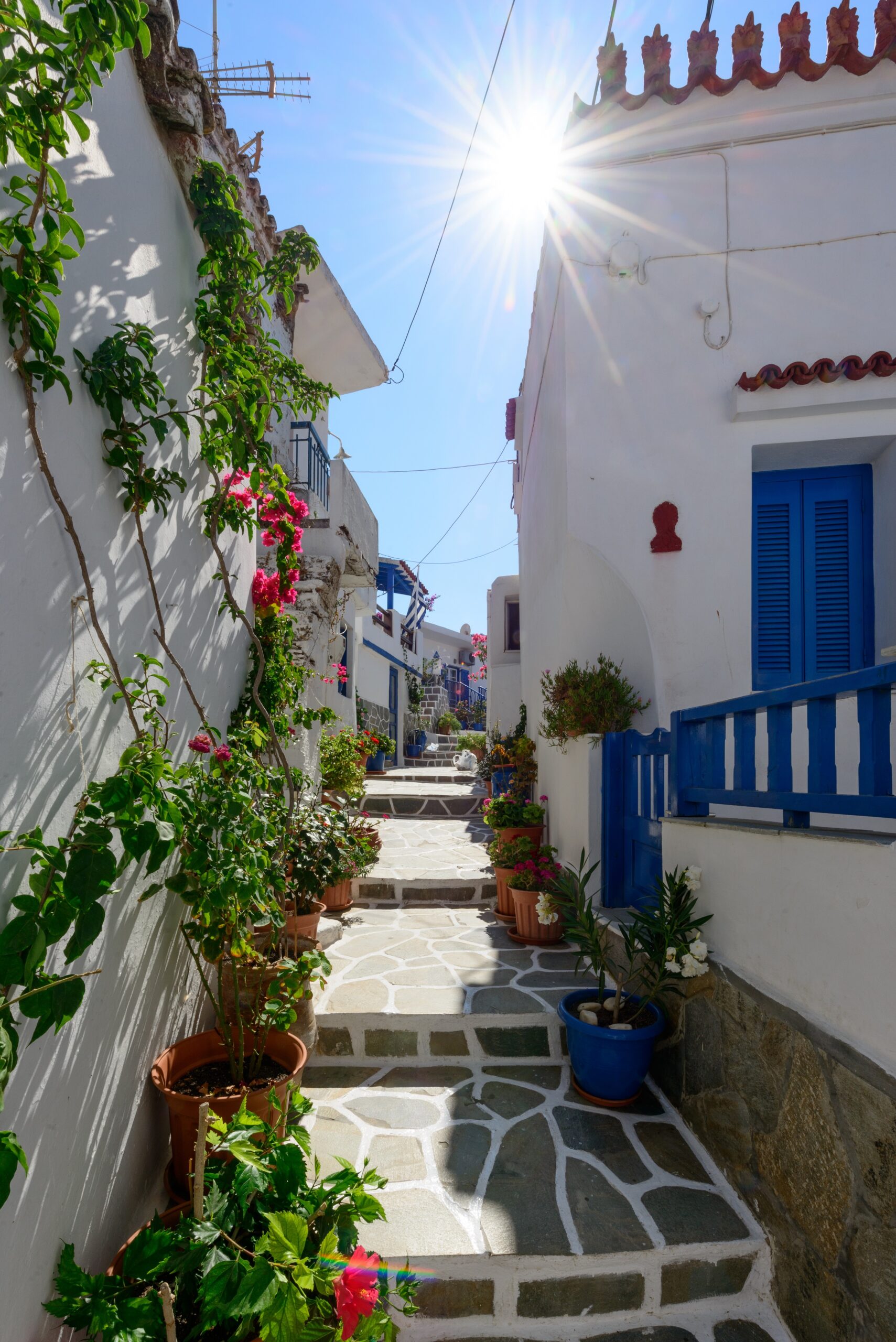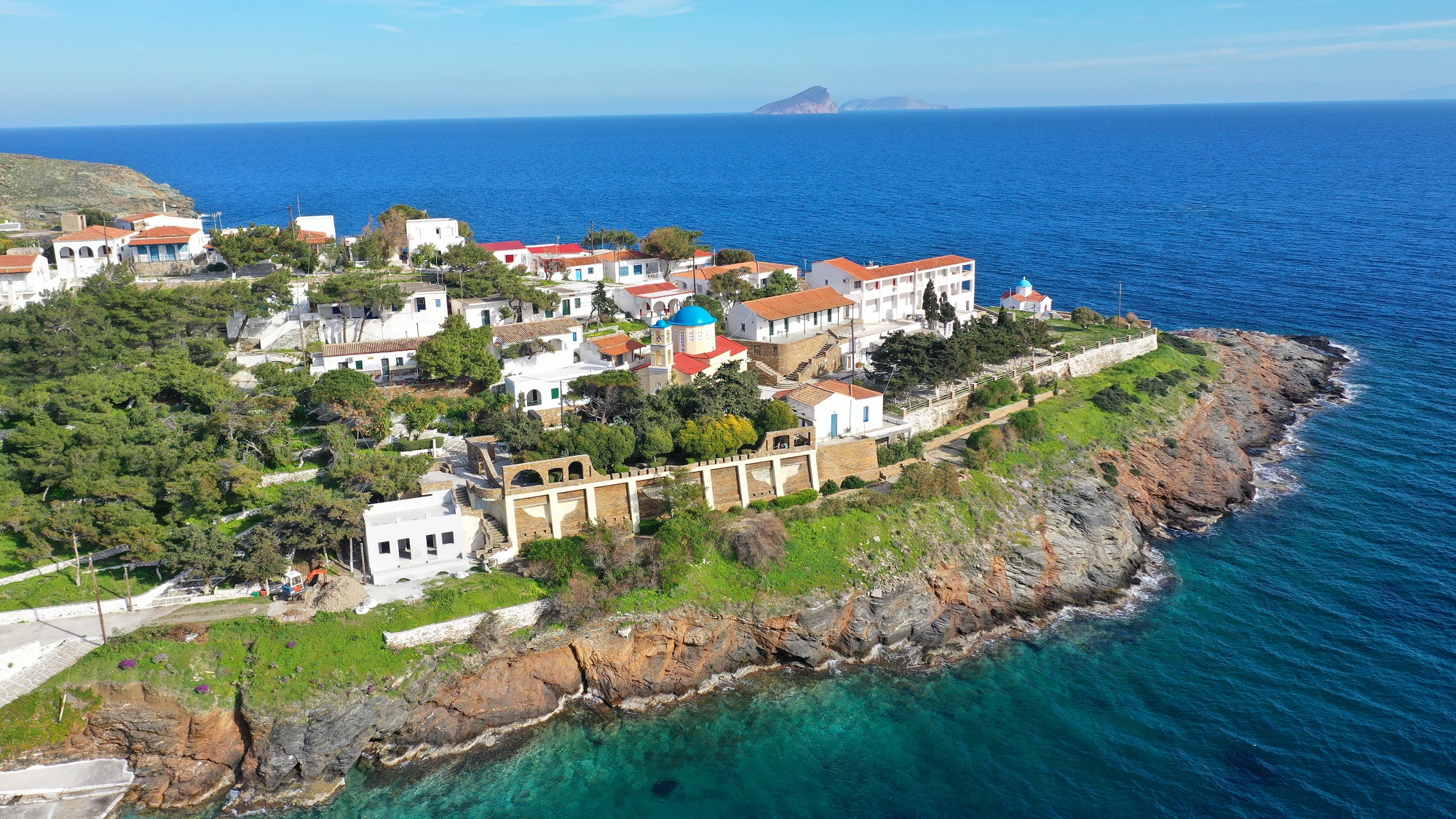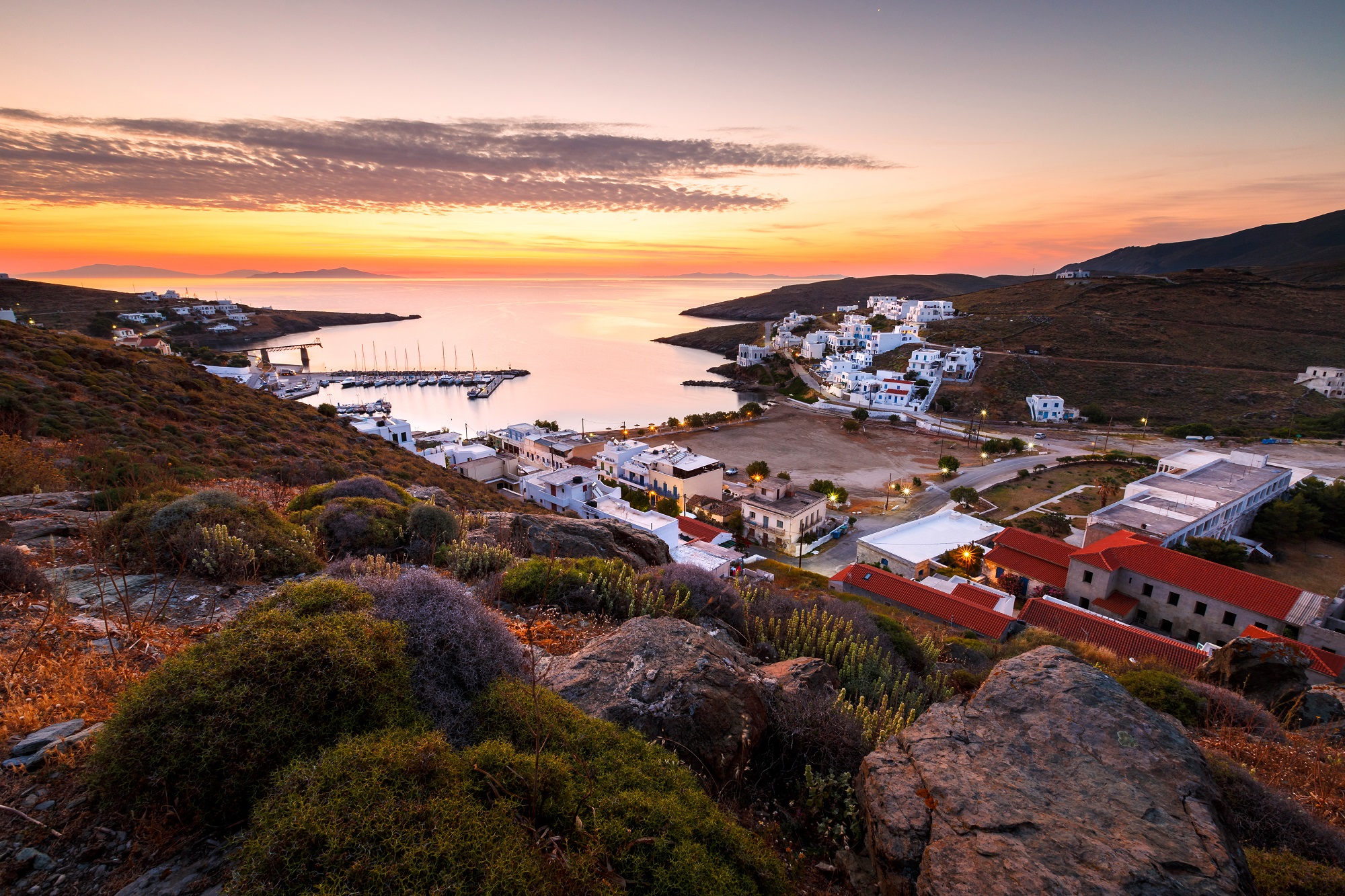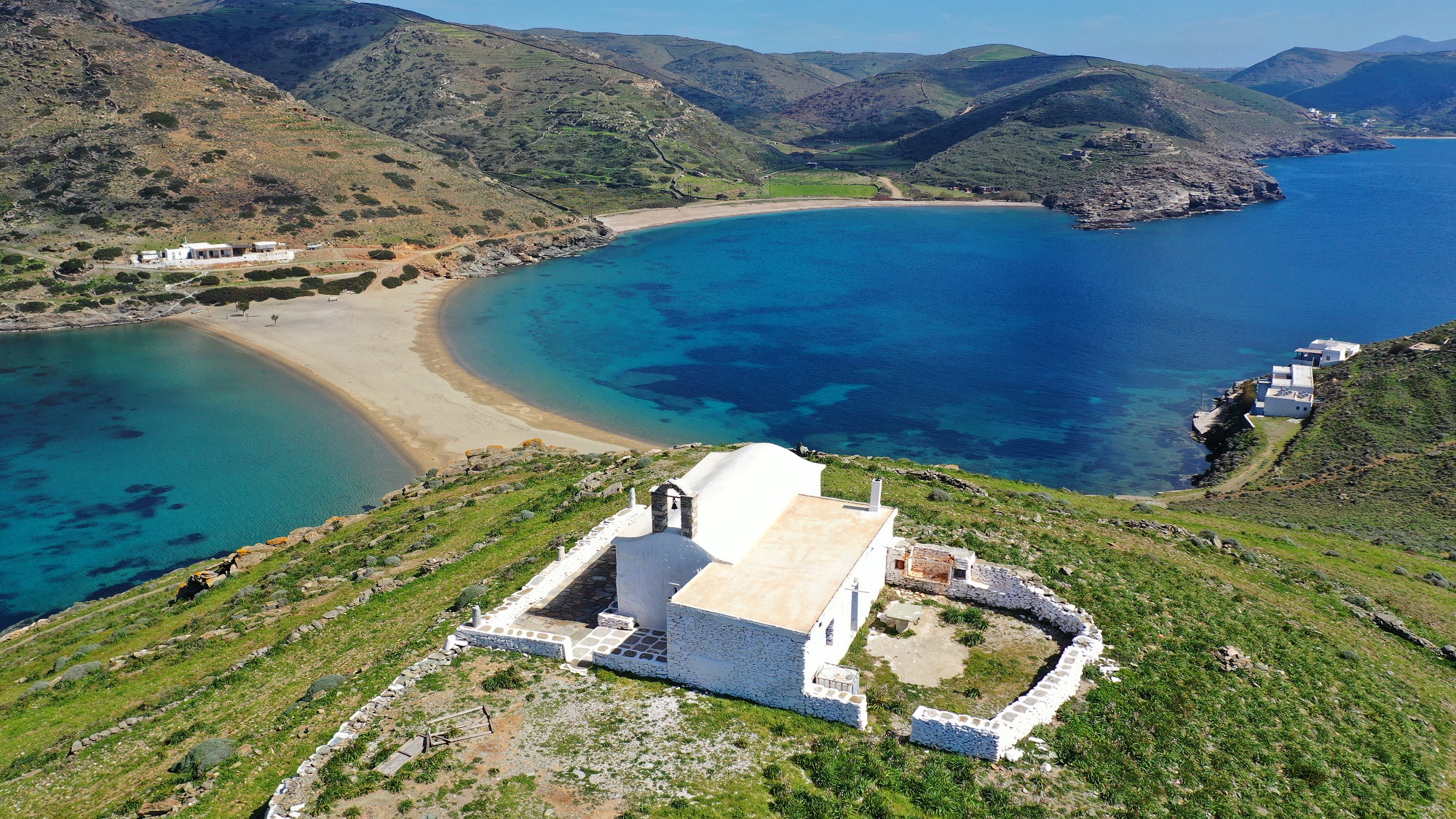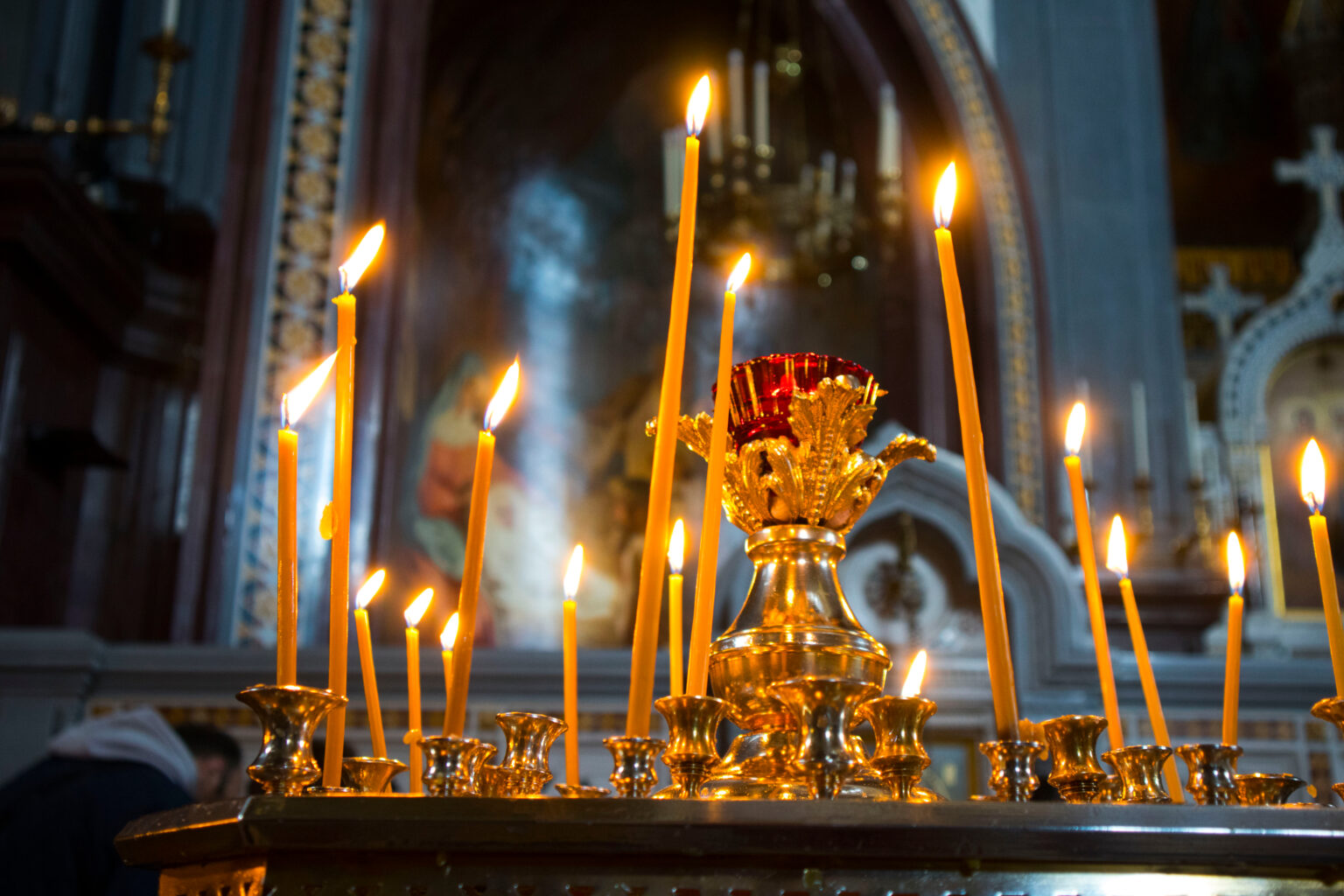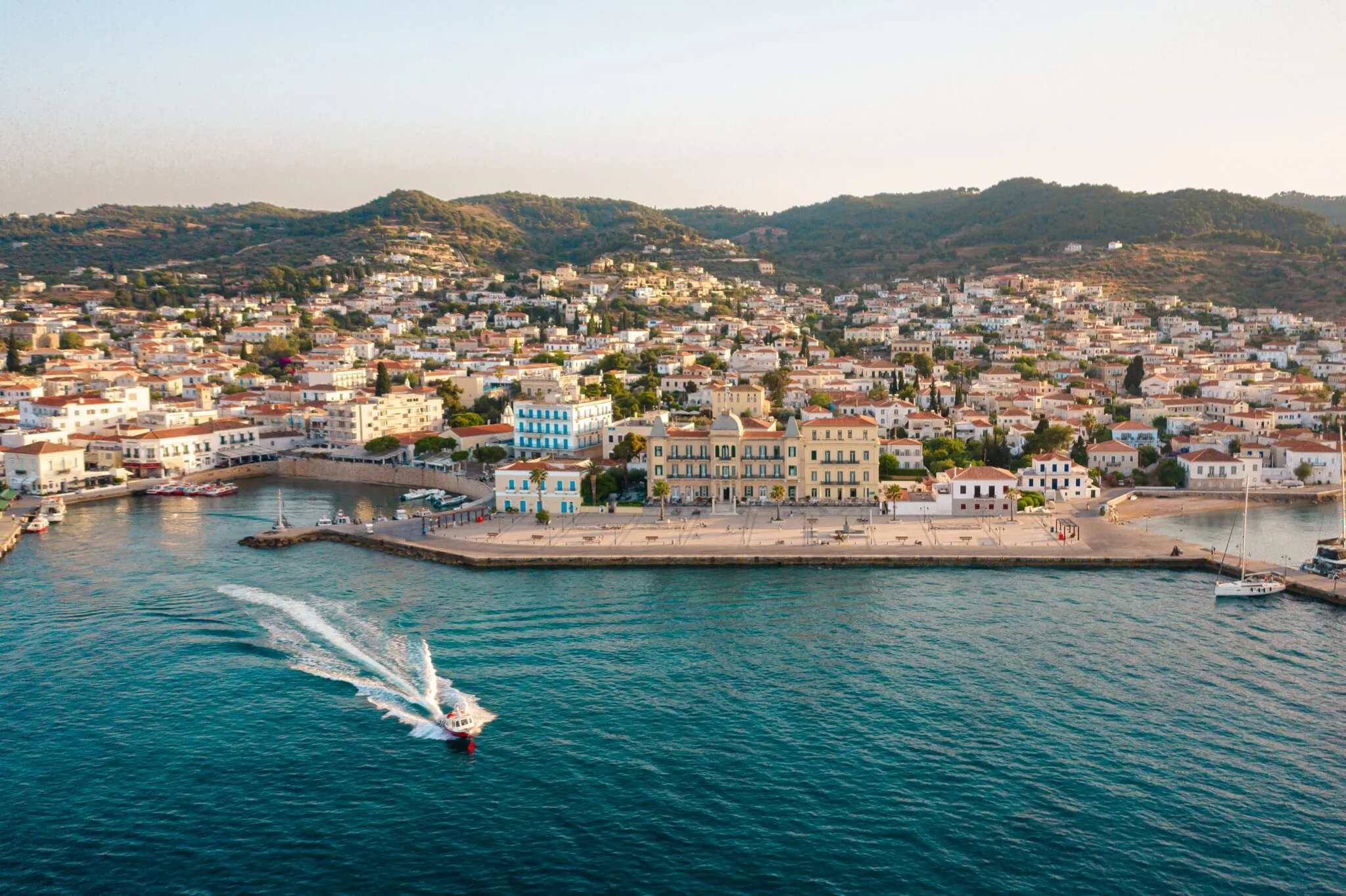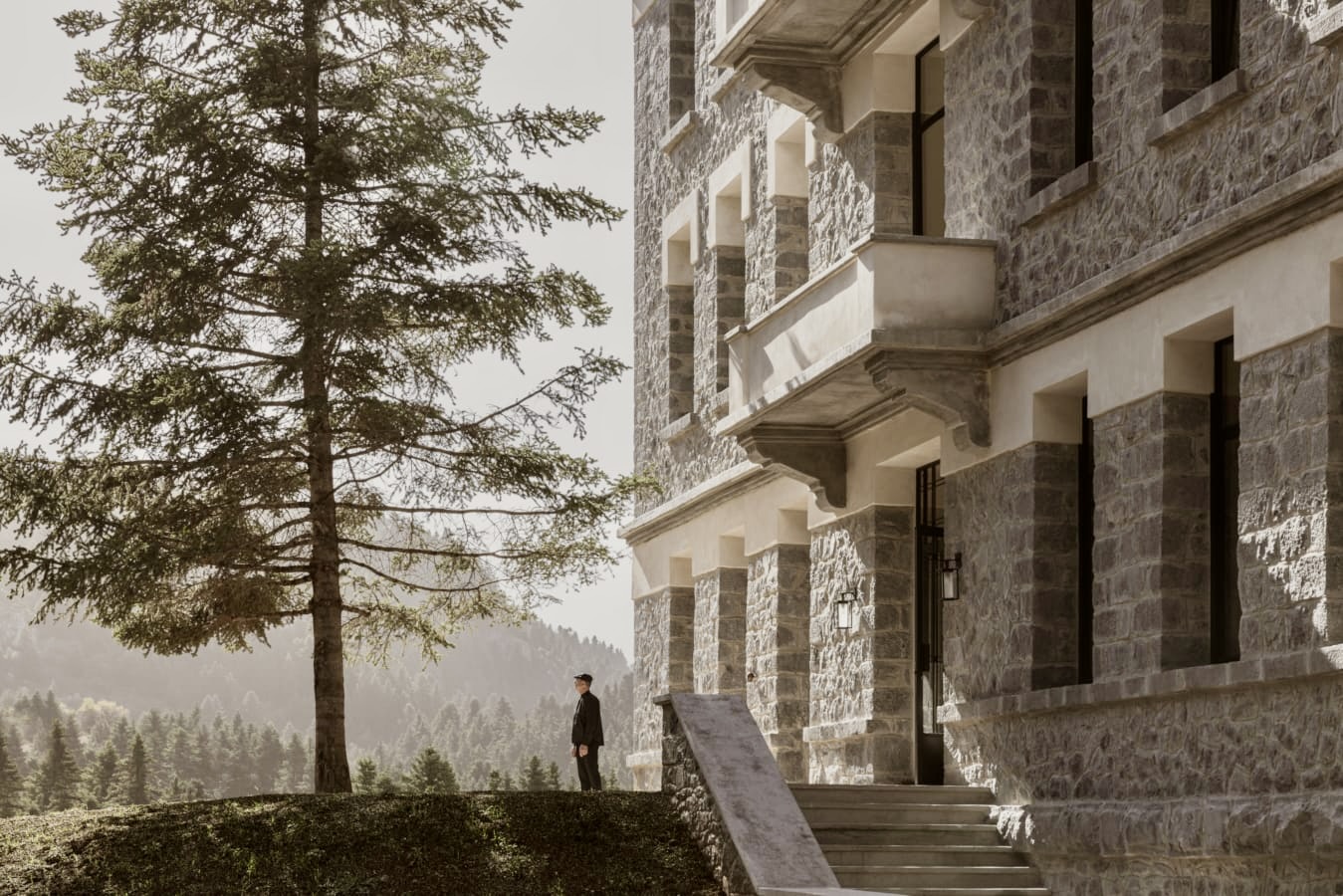Ferryboats departing from Lavrio reach Kythnos in 1 hour and 45 minutes, while the route from Piraeus is covered in 3 hours. Despite its close proximity to Athens, Kythnos has not been overswept by major tourism-sector development, as has been the case with most other Cyclades islands over recent decades.
On the contrary, tourism development has remained mild on Kythnos, presumably because the travel sector does not represent the primary source of income for the island’s inhabitants.
Even so, Kythnos does possess infrastructure. Hotels, restaurants and cafes, combined with the hospitable locals, make the island a great place to enjoy Cyclades vistas.
Begin with Hora, the island’s main town, whose features include charming whitewashed houses with blue-coloured window frames and shutters, small and cosy traditional kafeneia, delightful yards with gardenias, geraniums and roses, cats, whitewashed churches, vaulted arcades and fascinating alleys, the aroma of home cooking permeating the air.
Also, Hora offers a view of the rest of the island and is car-free. It is off limits to vehicles, which are left outside its boundaries as the town’s alleys are too narrow. In a nutshell, this Cycladic town has all the attributes needed for an enjoyable visit.
Contrary to Hora’s classic Cycladic style, the village Dryopida, at the centre of the island, elevated and far from the sea, differs. This village features a uniform architectural style of small two-storey houses with red-coloured roof tiles, which can be applied without fear as the location’s surrounding hills protect the village from strong winds. This explains why Dryopida’s ceramic art has flourished.
Carry on for Panagia Kanala, a small village developed around a church of the same name. The island’s religious focal point, it attracts many pilgrims from beyond the island.
A fascinating road route runs from Dryopida in a southerly direction, all the way to the seaside village Agios Dimitrios, the island’s southernmost point, almost in a straight line of uphill and downhill stretches along the island’s ridge. The route offers sea views to the left and right. The village Agios Dimitrios features a sandy beach and some shops.
Tourism is more developed at the island’s northern side, the village Loutra being one of the more advanced spots. Xenia, an old spa resort, and public baths dominate this village’s beach area, while cafes, tavernas and rooms for rent are spread around the sides. The local marina typically fills with yachts. Yacht tourism emerged as the earliest form of tourism on Kythnos as a result of the island’s short distance from Athens.
The morning hours are ideal for exploring some of the island’s 104 beaches, many of which can only be accessed by boat. Most of Kythnos’ beaches are small and sandy, on the west and east coasts of the island. Some of these beaches are well known and popular, including Skylos, Kolona, Episkopi and Apokrousi. Others remain obscure, so much so that you could find yourselves alone at some marvellous seaside setting in the summer.
Διαβάστε ακόμα:
Long weekend in Koroni, Greece: Medieval atmosphere, magical sunsets



